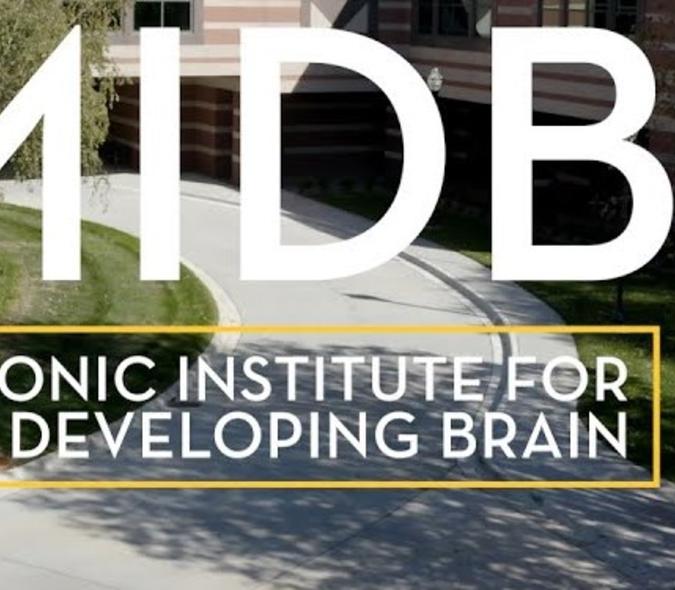
U of M researchers are conducting ground-breaking research to better understand and treat eating disorders
Assistant Professor Ann Haynos, PhD, got interested in eating disorders when she was in high school. “A condition such as anorexia nervosa typically occurs in less than one percent of the population,” she said. “In my school, it was closer to ten percent. I had some friends who developed eating disorders and were very ill. I wanted to understand how that happened and to design treatments to help them get better.”
Haynos is now part of the Minnesota Center for Eating Disorders Research at the University. She is joined by department colleagues Carol Peterson, PhD; Emily Pisetsky, PhD, LP; Lisa Anderson, PhD, LP; and postdoctoral researchers. “We want to understand what causes eating disorders and why people get stuck in those patterns and how to alter them,” said Haynos. “We are looking at socio-cultural and biological factors that will help us prevent or treat these conditions.”
What, exactly, is meant by “eating disorder?”
It is a condition that must meet certain diagnostic criteria, according to Haynos. “Eating disorders encompass a broad set of problems related to eating and weight,” she explained. “When a person’s eating habits or their relationship with their weight causes enough distress or impairment that it starts to affect the rest of their life, they have an eating disorder.” Those who have anorexia nervosa lose significant weight and have a number of medical problems, she continued. “Those who have disorders associated with binge eating feel out of control and have a lot of distress about their eating habits,” said Haynos. “An eating disorder could also look like someone who is so negatively overwhelmed by their body image despite having fairly normal eating habits that they avoid social occasions.”
Haynos noted there might be some confusion about eating disorders and disordered eating, which is more common. “Disordered eating pertains to unhealthy eating habits,” she said. “You can have a dysfunctional relationship with eating that doesn’t rise to the level of a psychiatric disorder.” She notes, however, that even disordered eating is associated with negative physical and mental health outcomes.
How do eating disorders affect lives?

The impact can be significant, according to Haynos (pictured here). “It depends on the level of the eating disorder and how long it’s been going on,” she said. “People with eating disorders often have anxiety and depression as comorbidities. They also have higher rates of non-suicidal self-injury and suicide attempts.”
The condition can be very expensive. “Treatment is costly for those who need residential or inpatient care,” said Haynos. “Or if they end up in the emergency room with medical complications.” She added that evidence shows eating disorders can effect a person’s ability to regularly go to work or school. The conditions can also result in cardiovascular issues, cancer, or diabetes, and can have a significant social impact.
Who typically gets an eating disorder?
“This is a condition that can affect people of all races and gender identities,” said Haynos. “One thing that’s becoming increasingly apparent is that many of our research samples are biased toward people who can and do access treatment.” That results in study samples that do not necessarily reflect the demographics of all individuals who develop eating disorders. Haynos added that males are underrepresented because there is a lot of stigma associated with having an eating disorder. “Gender nonconforming or nonbinary individuals have eating disorders at very high rates and are often not represented in our samples,” she noted. “Our samples are also disproportionately white. As a result, there is an idea that eating disorders typically affect young, white, affluent women, which is simply not true.”
At what age is an eating disorder diagnosed?
Eating disorders can show up at any age, noted Haynos. “What we usually see is eating disorder onset somewhere between late pre-adolescence and late adolescence,” she said. “Purging tends to show up later. Eating disorders are closely tied to your body image, which is set by mid-adolescence. A large longitudinal study showed that how you felt about your body at 15 was generally how you felt at 35.”
What causes eating disorders?
It’s complicated. “These are multifaceted illnesses,” said Haynos. “There seems to be a genetic factor – not only for the psychological component of the illness but for the weight component.” Interestingly, people who develop anorexia nervosa may have a natural tendency towards thinness. “Anorexia nervosa has been tied to metabolic traits, but also personality traits, like threat sensitivity and persistence,” she said. There is some evidence that those who binge and purge tend to be more impulsive. Haynos said that people with eating disorders learn early that certain eating patterns make them feel better. Other social and environmental factors may play a role. She noted that, “Food insecurity may play a role in binging and purging.”
What kind of research is the department doing in this area?
Haynos’ research focuses on understanding how people get stuck in problematic disordered eating, primarily with anorexia nervosa. Her goal is to use that information to design better treatment. “We have limited empirical evidence about how people with eating disorders like anorexia nervosa get better,” she said. “We know they do … we just don’t know how.”
Haynos believes that many times, clinicians are shooting in the dark when trying to treat these disorders. “My work focuses on understanding the neurobiological and behavioral patterns that propel people to pursue weight loss way beyond where it’s adaptive,” she said. “We are using information we’ve learned about how people get stuck to intervene on those issues and design treatments.”
fMRI biofeedback
One such approach includes using a new therapy called Positive Affect Treatment. “It goes beyond targeting decreasing the disordered eating and focuses instead on how to help people with eating disorders build a better life that’s so good they don’t need to restrict,” Haynos said.
In another line of research, Haynos and colleagues are testing real-time fMRI biofeedback as an intervention for problematic emotions in anorexia nervosa. To accomplish their goal, the research team puts someone with anorexia nervosa in a functional MRI (fMRI) machine and shows them distressing images. The fMRI enables the researchers to isolate the part of the subject’s brain activated by negative emotions generated by the images they’re seeing. “We show the person how much activity is being created in that part of their brain and teach them to decrease it by making a thermometer bar they can see beside the image go down,” said Haynos. The goal is to have them feel less threat in general, thus reducing the need for restrictive eating.
“We also show them ways to change their thoughts to reduce the activation in that area of the brain,” said Haynos. For instance, they may show participants a picture of an older person who is critically ill and encourage them to see a broader context, such as this person has had a full life and they are surrounded by people they love and who love them. “We help them choose more positive reactions,” said Haynos. “We can then assess which strategies for managing emotions are chosen more than others and which are the most effective.”
What misconceptions exist about eating disorders?
“There is an insidious belief that eating disorders aren’t that severe,” said Haynos. “People sometimes believe that these are just young women trying to look good. In fact, eating disorders have some of the highest mortality rates of any psychiatric illness. People also have impaired quality of life because of their disorder. Eating disorders feel shameful and can cause devastating loneliness.”
Learn more about the Minnesota Center for Eating Disorders Research.



